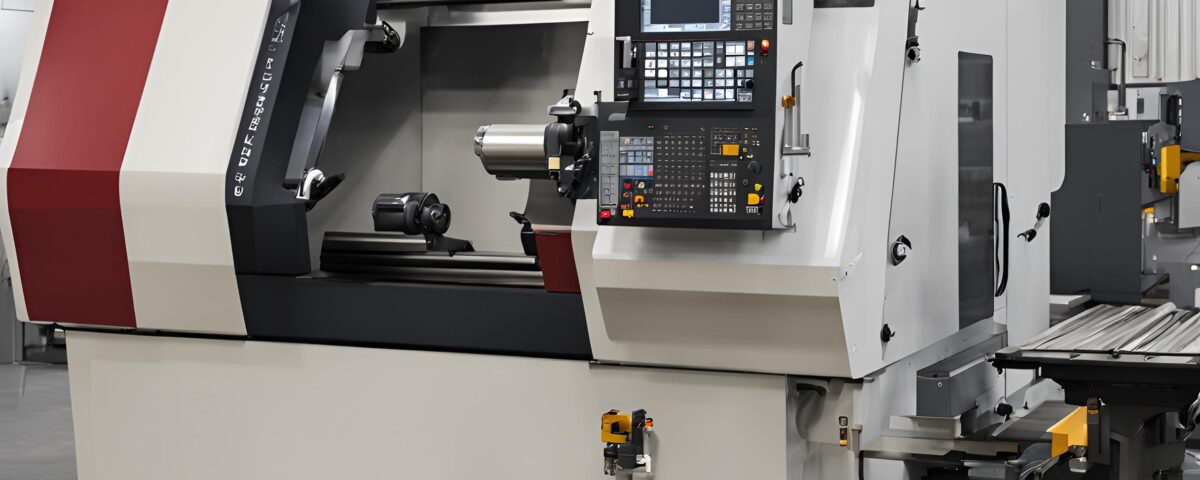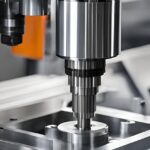
A Comprehensive Guide to CNC Turning Machine Parts
28 June 2024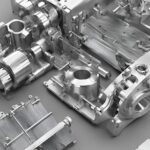
Comprehensive Guide to Mechanical Design Workflow
3 July 2024For machining centers, cutting tools are consumable items that will become damaged, worn, and chipped during the machining process. These occurrences are inevitable, but there are also controllable factors, such as unscientific and irregular operation, as well as improper maintenance. By identifying the root cause, we can better address the issue.
Have you ever faced the frustration of producing imprecise parts, wasting materials, and losing valuable time in the manufacturing process? You're not alone. Many manufacturers struggle with these issues. But what if I told you there's a solution that can transform your production efficiency and precision? Enter the CNC lathe machine. Let's dive into the world of CNC technology and explore the working principles of this game-changing tool.
A CNC lathe machine operates by rotating the workpiece on its axis while cutting tools shape it to the desired dimensions. The precision and control offered by computer numerical control (CNC) systems make it possible to create intricate parts with high accuracy. These machines are indispensable in modern manufacturing due to their efficiency and versatility.
But hold on, there's more to it than just spinning and cutting. Stick with me as we delve deeper into the mechanics, components, and benefits of CNC lathe machines. You won't want to miss this!
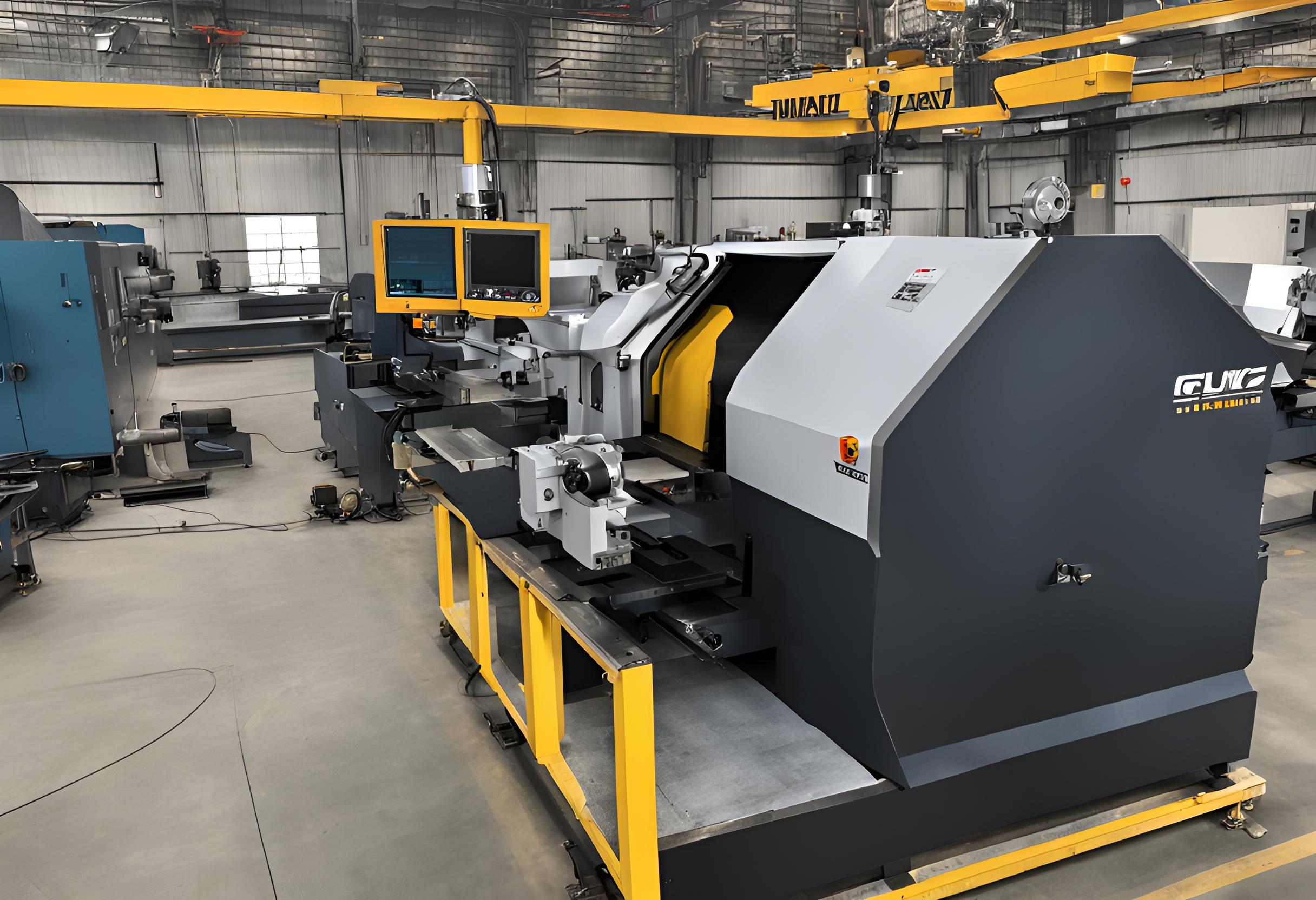
What is a CNC Lathe Machine?
A CNC lathe machine is a type of automated machinery used in manufacturing to shape materials like metal, plastic, and wood. "CNC" stands for Computer Numerical Control, which means the machine's movements and operations are controlled by a computer program. This program dictates the speed, feed rate, and path of the cutting tools, allowing for highly precise and repeatable production.
Imagine a sculptor working with a spinning block of material, chiseling away to create intricate designs. A CNC lathe does this automatically, with remarkable accuracy. The workpiece is rotated, and cutting tools move along specified paths to remove material and shape it into the desired form. It's like having a master craftsman working for you 24/7, never making mistakes and never needing a break.
The CNC lathe machine's ability to perform complex tasks with high precision makes it indispensable in industries such as aerospace, automotive, electronics, and medical device manufacturing. Its versatility allows it to produce everything from tiny electronic components to large structural parts with equal ease.
Key Features of CNC Lathe Machines
CNC lathe machines come with several key features that set them apart from traditional lathes:
Precision: Achieves high levels of accuracy, ensuring every part meets exact specifications.
Automation: Operates with minimal human intervention, reducing the risk of human error.
Consistency: Ensures uniformity across multiple parts, making it ideal for mass production.
Versatility: Capable of performing a variety of operations, from cutting and sanding to drilling and knurling. -
Efficiency: Increases production speed and reduces waste, leading to cost savings.
Advanced Software: Utilizes sophisticated software for programming and operation, allowing for complex designs and patterns.
Core Components of a CNC Lathe Machine
Understanding the core components of a CNC lathe machine is crucial to grasping how it operates. Let's break down the main parts that make up this sophisticated piece of equipment:
Bed
The bed is the foundation of the CNC lathe machine. It provides the structural base that supports all other components. It's designed to be rigid and stable to ensure precision and reduce vibrations during operation.
Headstock
The headstock is located at one end of the bed. It houses the main spindle, which rotates the workpiece. The headstock also contains the drive mechanism that powers the spindle, ensuring consistent rotation speeds.
Tailstock
Opposite the headstock is the tailstock. The tailstock supports the workpiece from the other end, providing stability, especially for longer pieces. It can be moved along the bed and secured at any position as needed.
Carriage
The carriage is a movable component that slides along the bed. It holds and moves the cutting tools into position against the rotating workpiece. The carriage's movement is precisely controlled by the CNC program to ensure accurate cuts.
Chuck
The chuck is a clamping device attached to the spindle. It holds the workpiece securely in place while it rotates. There are various types of chucks, including three-jaw and four-jaw versions, each suited to different types of workpieces.
Turret
The turret is a tool holder mounted on the carriage. It can rotate to bring different cutting tools into position. This allows for quick tool changes and the ability to perform multiple operations without manual intervention.
Spindle
The spindle is the rotating axis of the CNC lathe machine. It's driven by the motor housed in the headstock. The spindle's speed and torque are adjustable, allowing for different machining operations.
Control Panel
The control panel is the interface between the operator and the CNC lathe. It allows the operator to input commands, adjust settings, and monitor the machine's status. Modern control panels are often touchscreen and can display detailed information about the machining process.
Tailstock Quill
The quill is a cylindrical component within the tailstock that extends to support the workpiece. It can be advanced or retracted as needed, providing additional support for the workpiece during machining.
Ways
The ways are precisely machined tracks on the bed that guide the movement of the carriage and tailstock. They ensure smooth and accurate motion, which is essential for precise machining.
The Working Principle of CNC Lathe Machines
At its core, the working principle of CNC lathe machines revolves around the concept of rotating a workpiece against cutting tools to remove material and shape the part. This process is automated and controlled by computer numerical control (CNC) technology, which ensures precision, repeatability, and efficiency. Let's dive into the details of how this fascinating process works.
Rotating the Workpiece
The heart of a CNC lathe machine's operation is the rotation of the workpiece. The workpiece, secured in the chuck, is spun at high speeds by the spindle. The speed and direction of rotation are meticulously controlled by the CNC program, allowing for consistent and accurate machining.
Cutting Tools
Cutting tools, mounted on the turret or carriage, are brought into contact with the rotating workpiece. These tools can include a variety of cutting, boring, drilling, and threading tools, each designed for specific operations. The precise positioning and movement of these tools are dictated by the CNC program.
CNC Program
The CNC program is a set of instructions written in G-code, a language specifically designed for controlling CNC machines. This program dictates every aspect of the machining process, including tool paths, feed rates, spindle speeds, and cutting depths. The program is loaded into the CNC machine's control panel, which then executes the commands with precision.
Tool Movements
During operation, the cutting tools move along defined paths to shape the workpiece. These movements are controlled along multiple axes, typically X (horizontal) and Z (vertical). The CNC system ensures that these movements are smooth and accurate, maintaining the desired dimensions and tolerances of the final part.
Material Removal
As the workpiece rotates, the cutting tools remove material to achieve the desired shape. This process, known as turning, involves various operations such as facing, tapering, threading, and grooving. Each operation requires specific tool paths and parameters, all controlled by the CNC program.
Continuous Monitoring and Adjustments
One of the key advantages of CNC lathe machines is their ability to continuously monitor and adjust the machining process. Sensors and feedback systems ensure that the machine operates within the specified parameters, making real-time adjustments as needed. This capability enhances precision and reduces the likelihood of errors.
Finishing Operations
Once the primary machining operations are completed, finishing operations can be performed to achieve the desired surface finish and dimensional accuracy. These operations may include polishing, deburring, and final inspection, all of which can be automated and controlled by the CNC system.
Quality Control
Quality control is an integral part of the CNC machining process. The CNC system can be programmed to measure and inspect the workpiece during and after machining. This ensures that each part meets the required specifications and tolerances, maintaining high standards of quality and consistency.
Types of CNC Lathe Machines
CNC lathe machines come in various types, each designed to meet specific manufacturing needs. Understanding these different types can help you choose the right machine for your production requirements. Let's explore the main types of CNC lathe machines and their unique features.
Horizontal CNC Lathes
Horizontal CNC lathes are the most common type of CNC lathe machines. In these machines, the spindle is oriented horizontally, allowing the workpiece to be mounted horizontally as well. This setup is ideal for producing cylindrical parts such as shafts, rods, and pipes. Horizontal CNC lathes are versatile and can handle a wide range of materials and part sizes.
Vertical CNC Lathes
Vertical CNC lathes feature a vertical spindle orientation. The workpiece is mounted vertically, which makes these machines particularly useful for handling large, heavy, or awkwardly shaped parts. Vertical CNC lathes are commonly used in industries such as aerospace and automotive, where large components like turbine casings and wheels need precise machining.
Swiss-Type CNC Lathes
Swiss-type CNC lathes are known for their precision and ability to produce small, intricate parts. These machines use a sliding headstock and guide bushing, allowing the workpiece to move axially while the tools remain stationary. This setup minimizes deflection and enhances precision, making Swiss-type lathes perfect for manufacturing components used in the medical, electronics, and watchmaking industries.
Multi-Spindle CNC Lathes
Multi-spindle CNC lathes are designed for high-volume production. These machines feature multiple spindles, allowing multiple parts to be machined simultaneously. This setup significantly increases productivity and reduces cycle times. Multi-spindle lathes are often used in the automotive and electronics industries, where large quantities of identical parts are needed.
CNC Turning Centers
CNC turning centers are advanced machines that combine the capabilities of a CNC lathe with additional functionalities such as milling, drilling, and tapping. These multi-functional machines allow for complete machining of parts in a single setup, reducing the need for multiple machines and setups. CNC turning centers are ideal for complex parts that require multiple operations.
Gang Tool CNC Lathes
Gang tool CNC lathes use a fixed gang of tools mounted on a slide. Unlike turrets that rotate to change tools, gang tool lathes slide the entire tool gang into position. This setup reduces tool change times and is ideal for high-speed, high-volume production of small parts. Gang tool lathes are commonly used in industries like electronics and medical devices.
Advantages of CNC Lathe Machines
CNC lathe machines have revolutionized the manufacturing industry with their precision, efficiency, and versatility. Whether you're producing aerospace components, automotive parts, or medical devices, these machines offer a range of benefits that can significantly enhance your production process. Let's explore the key advantages of CNC lathe machines.
Precision and Accuracy
- Consistent production of high-quality parts
- Ability to create complex geometries
- Reduced material waste
Efficiency and Productivity
- Increased production speed
- Reduced downtime
- Capability to run multiple shifts with minimal supervision
Versatility
- Machining a wide range of materials
- Performing multiple operations (turning, threading, boring, drilling)
- Adapting to various manufacturing needs
Automation and Repeatability
- Consistent part quality
- Minimized human error
- Simplified quality control
Cost-Effectiveness
- Lower labor costs
- Reduced material waste
- Decreased need for outsourcing
Enhanced Safety
- Reduced risk of accidents
- Improved operator safety
- Built-in safety features
Flexibility and Customization
- Quick adaptation to design changes
- Easy customization
- Reduced lead times
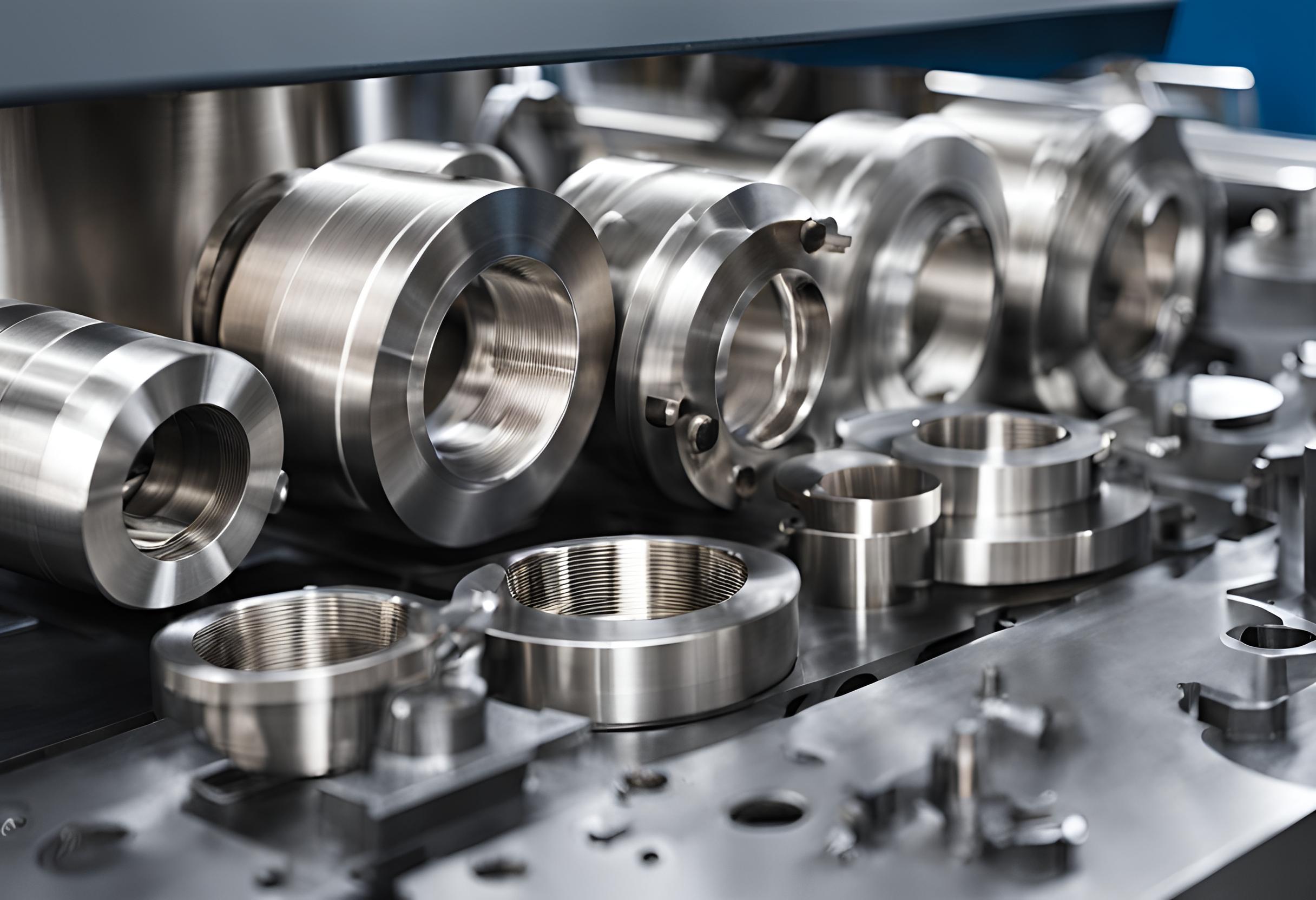
Applications of CNC Lathe Machines
CNC lathe machines are incredibly versatile and find applications across a wide range of industries. Their ability to produce high-precision parts efficiently makes them indispensable in modern manufacturing. Let's explore the various applications of CNC lathe machines and understand how they contribute to different sectors.
Aerospace Industry
- Components: Turbine blades, engine parts, structural components.
- Benefits: High precision and reliability.
Automotive Industry
- Components: Engine parts, transmission components, wheel hubs.
- Benefits: High-volume production with consistent quality.
Medical Industry
- Components: Surgical instruments, orthopedic implants, dental parts.
- Benefits: Exceptional accuracy and surface finish.
Electronics Industry
- Components: Connectors, housings, semiconductor parts.
- Benefits: Tight tolerances and complex geometries.
Oil and Gas Industry
- Components: Valves, pump components, pipe fittings.
- Benefits: Durability and precision in harsh conditions.
Defense Industry
- Components: Firearm parts, missile components, aerospace defense parts.
- Benefits: Rigorous standards for durability and precision.
Industrial Equipment
- Components: Machine parts, conveyor components, robotic parts.
- Benefits: Reliability in demanding environments.
Jewelry Making
- Components: Rings, watch components, custom jewelry.
- Benefits: High precision for intricate designs.
Custom and Prototype Manufacturing
- Components: Prototypes, custom parts, small batch production.
- Benefits: Rapid production and high customization.
Programming and Operation of CNC Lathe Machines
The programming and operation of CNC lathe machines are integral to achieving precision, efficiency, and repeatability in manufacturing. Mastering these aspects ensures that CNC lathes produce high-quality parts consistently. Let's delve into the aspects of programming and operating CNC lathe machines.
Understanding G-Code and M-Code
G-code and M-code are the languages used to control CNC machines. G-code dictates the machine's movements, while M-code controls auxiliary functions.
Key Commands:
- G00: Rapid positioning
- G01: Linear interpolation (straight cutting)
- G02/G03: Circular interpolation (cutting arcs)
- M03/M04: Spindle on (clockwise/counterclockwise) -
- M05: Spindle stop
Creating a CNC Program
- Design the part using CAD software.
- Generate toolpaths with CAM software.
- Output the G-code from the CAM program.
- Upload the G-code to the CNC lathe.
- Run a simulation to check for errors.
- Make necessary adjustments to the program.
Setting Up the CNC Lathe
- Mount the workpiece in the chuck.
- Install the cutting tools in the turret.
- Set the tool offsets for correct positioning.
- Load the CNC program into the machine.
- Check machine settings (spindle speed, feed rate, coolant flow).
Running the CNC Lathe
- Start the machine and execute the program.
- Monitor the process for any anomalies.
- Make real-time adjustments if needed.
- Inspect the part periodically during production.
- Complete the cycle and remove the finished part.
Maintenance and Troubleshooting
Proper maintenance and effective troubleshooting are crucial for ensuring the longevity and optimal performance of CNC lathe machines. Regular upkeep helps prevent unexpected breakdowns, while swift troubleshooting minimizes downtime and maintains productivity.
Preventive Maintenance
Preventive maintenance involves regular, scheduled activities aimed at keeping the machine in good working order. These activities help identify potential issues before they become major problems.
Lubrication
Lubrication is essential for reducing friction and wear on moving parts. Regularly applying the appropriate lubricants to the machine's bearings, gears, and slides ensures smooth operation and extends the lifespan of these components. Operators should follow the manufacturer’s guidelines for lubrication intervals and types of lubricants to use.
Cleaning
Keeping the CNC lathe machine clean is vital for its efficient operation. Accumulated chips, dust, and debris can interfere with the machine's precision and cause wear on moving parts. Regular cleaning of the machine, including the bed, tool turret, and control panel, helps maintain accuracy and prevents mechanical issues.
Inspection
Routine inspections help detect early signs of wear or damage. Operators should regularly check the condition of critical components such as the spindle, tool holders, and electrical connections. Inspecting for loose bolts, misaligned parts, or unusual noises can help address issues before they escalate into significant problems.
Common Troubleshooting Tips
Despite regular maintenance, CNC lathe machines may still encounter issues. Knowing how to troubleshoot common problems quickly can save time and reduce production delays.
Tool Wear
Tool wear is a common issue that affects machining quality and precision. Signs of tool wear include poor surface finish, increased cutting forces, and dimensional inaccuracies.
To troubleshoot tool wear:
- Regularly inspect cutting tools for signs of wear and replace them as needed.
- Use appropriate cutting speeds and feeds to extend tool life.
- Ensure the tool is properly seated and secured in the tool holder.
Alignment Issues
Misalignment of machine components can lead to inaccurate machining and defective parts. Symptoms of alignment issues include uneven wear on the workpiece and inconsistent dimensions.
To address alignment problems:
- Check and adjust the alignment of the spindle, tailstock, and tool turret.
- Verify that the machine bed is level and properly anchored.
- Use precision alignment tools and follow the manufacturer's alignment procedures.
Software Errors
Software errors can disrupt the CNC machining process and result in operational failures. Common software-related issues include incorrect program codes, communication failures, and system crashes.
To troubleshoot software errors:
- Verify the accuracy of the G-Code and M-Code in the machining program.
- Ensure that the software is up to date and compatible with the machine’s control system.
- Restart the machine and reload the program if a software crash occurs.
- Consult the machine’s manual or technical support for specific error codes and solutions.
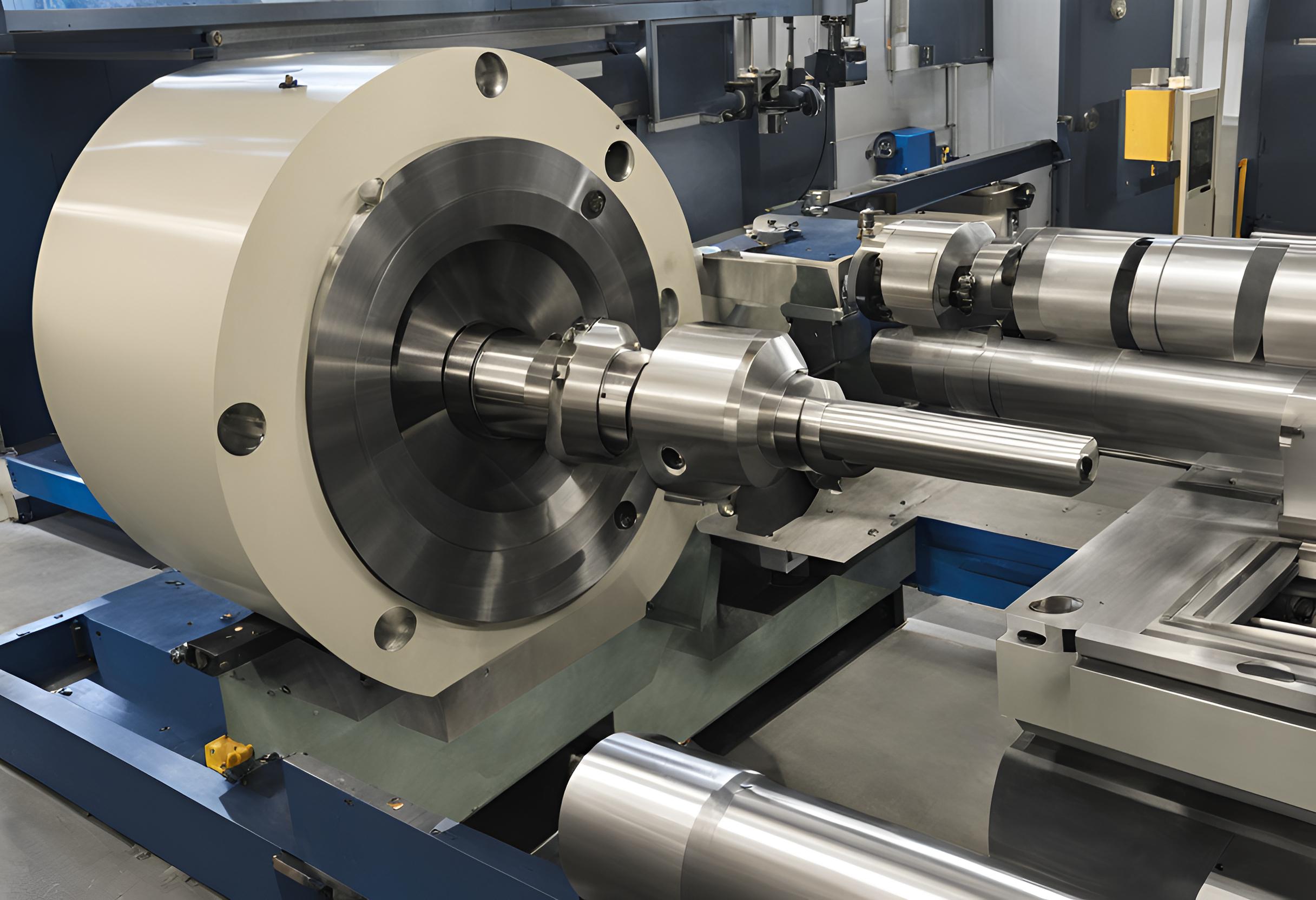
Conclusion
CNC lathe machines are pivotal in modern manufacturing, offering unmatched precision, efficiency, and versatility. They revolutionize industries such as aerospace, automotive, medical, and electronics by enabling the production of complex parts with high accuracy.
Understanding the working principles, core components, and applications of CNC lathe machines empowers manufacturers to optimize their use. Key to this is mastering G-code programming, proper machine setup, and diligent maintenance.
Regular maintenance and effective troubleshooting prevent downtime and ensure optimal performance. Implementing a preventive maintenance schedule and providing comprehensive operator training are crucial steps in maximizing the machine's potential.
In summary, CNC lathe machines are essential for achieving precise, efficient, and high-quality manufacturing. By leveraging their capabilities, you can enhance your production processes and maintain a competitive edge in the industry.

